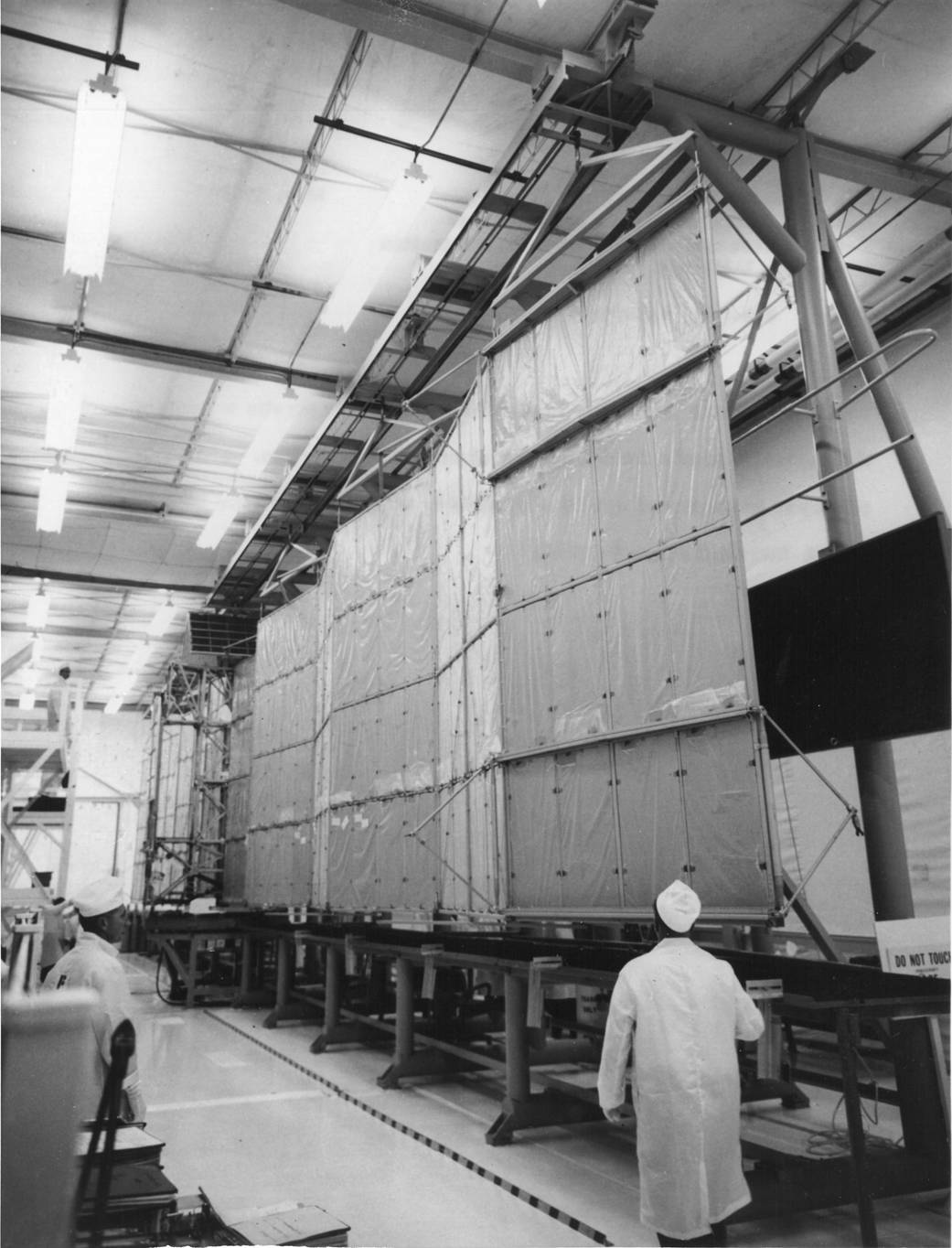This week in 1965, technicians at NASA’s Kennedy Space Center attached the Pegasus C satellite to the SA-10 Instrument Unit, S-IU-10, following completion of premating systems checks and panel deployment checks. SA-10 was launched July 30, 1965, and was the final flight of the Saturn I rocket. Developed by Fairchild Stratos Corp. and managed by NASA’s Marshall Space Flight Center, Pegasus C was the last of three meteoroid detection satellites launched by NASA to electronically record the size and frequency of particles in space and compare the performance of protected and unprotected solar cells as an important preliminary to crewed flight to the Moon. Here, the Pegasus B satellite is wrapped in plastic to protect the capacitor panels from dust, moisture and fingerprints. The wrapping is not removed until the satellite is prepared for launch. This July, in a series of special events, NASA is marking the 50th anniversary of the Apollo Program — the historic effort that sent the first U.S. astronauts into orbit around the Moon in 1968, and landed a dozen astronauts on the lunar surface between 1969 and 1972. For more pictures, and to connect to NASA’s remarkable history, visit the Marshall History Program’s webpage. (NASA)
1 min read


























